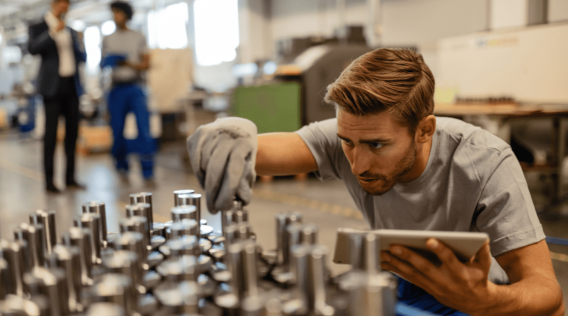Introduction:
When it comes to choosing materials for various applications, the decision often comes down to cast aluminum and cast iron. Both materials have their unique properties and advantages, making them suitable for different purposes. In this article, we will compare the properties and characteristics of cast aluminum and cast iron to help you make an informed decision.
1. Composition and Manufacturing:
Cast aluminum is an alloy made primarily of aluminum, with small amounts of other elements such as copper, magnesium, and silicon. It is produced by melting the aluminum alloy and pouring it into a mold to cool and solidify.
On the other hand, cast iron is an alloy made mostly of iron, with carbon content ranging from 2 to 4 percent. The manufacturing process involves melting the iron and adding small amounts of carbon and other elements. The molten iron is then poured into a mold and allowed to cool and harden.
2. Strength and Durability:
Cast aluminum is known for its lightweight nature, making it an excellent choice for applications where weight is a concern. It offers good strength-to-weight ratio, making it suitable for various parts and components. However, it is not as strong as cast iron and may not be suitable for heavy-duty applications.
Cast iron, on the other hand, is known for its exceptional strength and durability. It can withstand high compressive loads and is highly resistant to wear and tear. These properties make it ideal for applications that require high strength and durability, such as engine blocks and industrial machinery.
3. Heat Conductivity:
Cast aluminum is an excellent conductor of heat. It can quickly transfer heat from one area to another, making it suitable for applications where heat dissipation is crucial. This property is especially useful in industries such as automotive and aerospace, where components must withstand high temperatures.
Cast iron, on the other hand, has lower heat conductivity compared to cast aluminum. It takes longer to heat up and cool down, making it suitable for applications where heat retention is important. Cast iron is commonly used in cookware, such as frying pans and Dutch ovens, as it can distribute heat evenly and maintain a consistent temperature.
4. Corrosion Resistance:
Cast aluminum has excellent corrosion resistance, especially when exposed to the atmosphere. The presence of a thin oxide layer on the surface helps protect the metal from oxidization. However, it is susceptible to certain types of corrosion, such as pitting corrosion, when exposed to certain chemicals or environments.
Cast iron, on the other hand, is prone to rusting when exposed to moisture and oxygen. It requires regular maintenance, such as applying a protective coating or seasoning, to prevent corrosion. However, certain types of cast iron, such as ductile iron, offer better resistance to corrosion compared to traditional cast iron.
5. Cost:
In terms of cost, cast aluminum is generally more expensive than cast iron. The higher cost is due to the more complex manufacturing process and the higher cost of aluminum compared to iron. However, the price difference may vary depending on the specific application and the availability of raw materials.
Conclusion:
In conclusion, both cast aluminum and cast iron have their unique advantages and disadvantages. Cast aluminum is lightweight, has good heat conductivity, and excellent corrosion resistance, making it suitable for various applications. On the other hand, cast iron offers exceptional strength, durability, and heat retention, making it ideal for heavy-duty applications. When choosing between the two materials, it is essential to consider the specific requirements of the application and prioritize the properties that are most important.
-

- Magnesium thixomolding parts laptop housing cover B
-

- 2022 Heildsölu Heitt Sala Reiðhjólavarahlutir Magnesíumblendi barnahjól Ekkert Pedal Balance Reiðhjól Krakkar Margir litir í boði
-

- Hlíf fyrir fartölvuhús C
-

- Magnesium alloy die-casting rigid fork for bike
-

- Magnesíum álfelgur þikómótandi deyja-steypu UAV hlutar
-

- OEM Die casting manufacturer produce magnesium alloy wheel for kids push bike

 0086-750-5616188
0086-750-5616188 +86 13392089688
+86 13392089688 sales@zhongmei-tech.com
sales@zhongmei-tech.com








